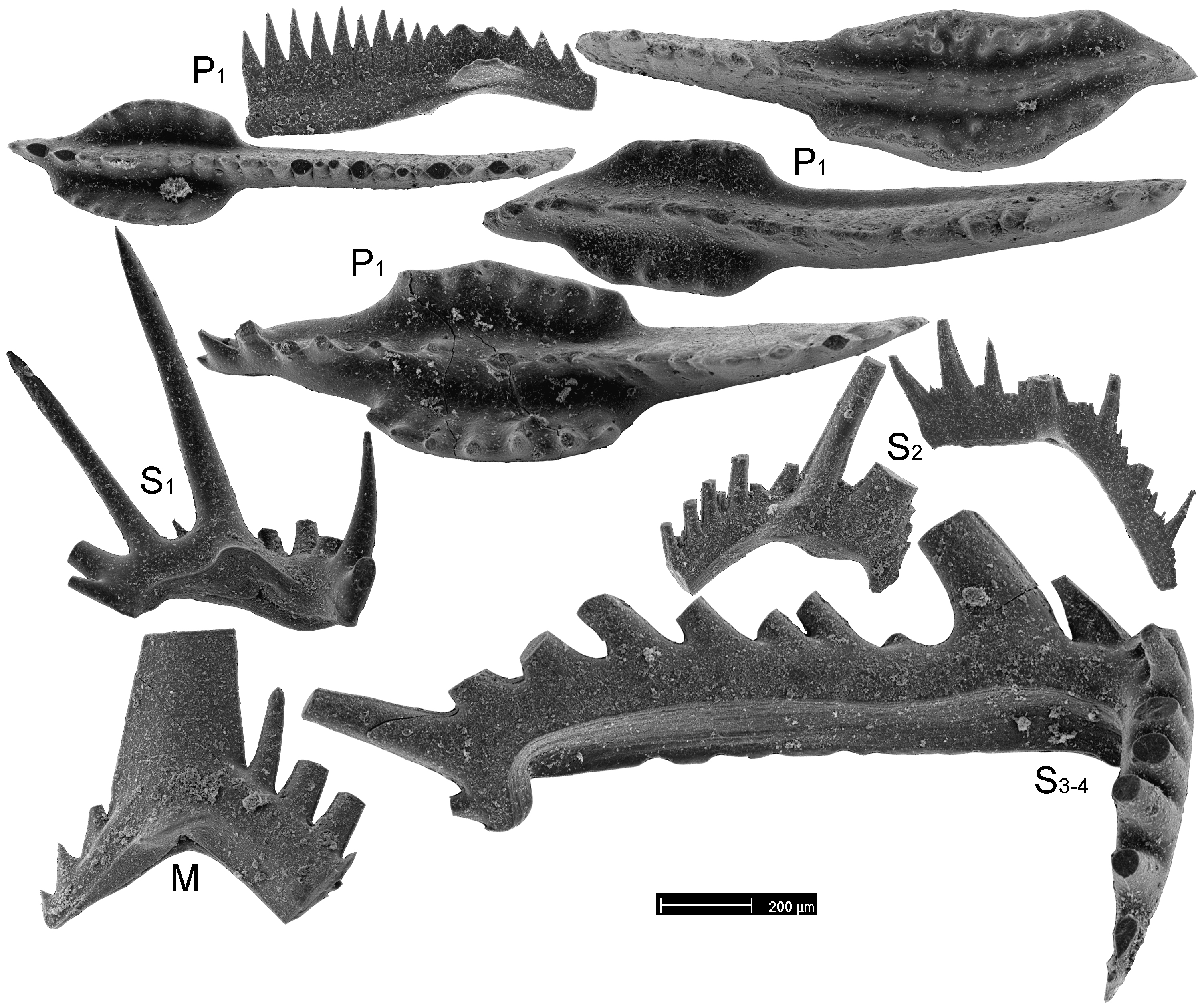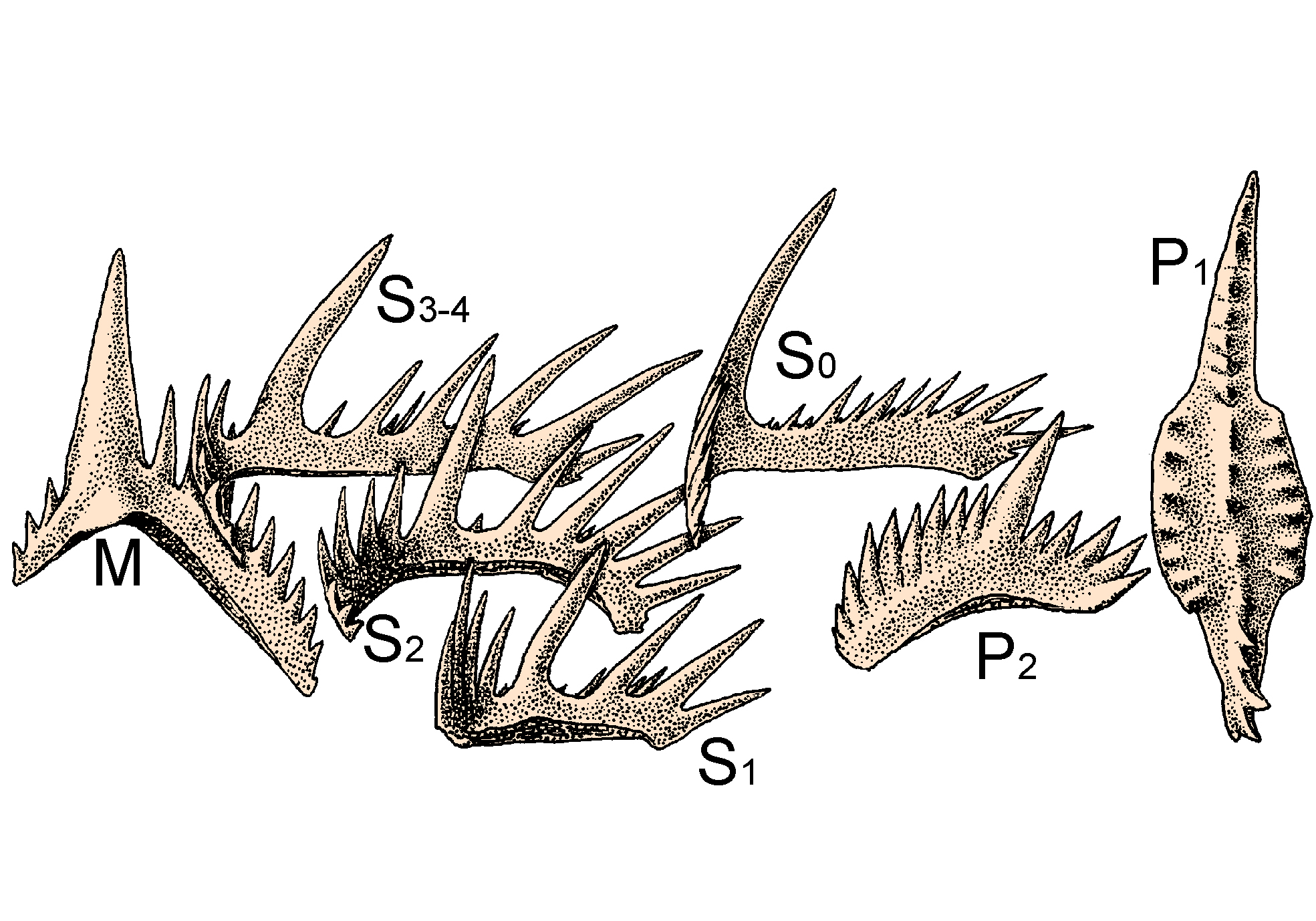Ctenopolygnathus brevilamina Branson & Mehl, 1934
Sugerowana cytacja: Dzik 2015. Ctenopolygnathus brevilamina Branson & Mehl 1934. Ikonoteka (http://ikonoteka.paleo.pan.pl/xwiki/bin/view/Species/Ctenopolygnathus+brevilamina+)
Diagnoza P1 elements with subparallel margins of the platform almost approaching the tip of the blade in mature specimens. Porównanie This species was earlier illustrated as Ctenopolygnathus sp. A from the Kellwasserakalk and C. sp. B from the basal Famennian at Płucki. Non-platform elements of the apparatus are of a rather primitive morphology, with short processes. Their growth was terminal, as indicated by hooked tips of processes, but termination may have taken place at very different sizes. Generally, species of Ctenopolygnathus are extremely variable and their identification requires samples with many specimens. The Frasnian P. angustidiscus had a generally shorter and even more variable platform of P1 elements. However, even in C. brevilamina there are specimens which did not develop platform even late in their ontogeny, others have a wide platform resembling that of Immognathus. Quite frequently the dorsal tip of the element, which lacks a platform, developed a prominent denticulation of the blade. The unstable morphology of elements of the apparatus suggests that Ctenopolygnathus originated by paedomorphosis, possibly from rather advanced polygnathids. In its Famennian evolution the original derived status seems to be partially re-established. Autekologia Występowanie geograficzne Płucki,Jabłonna, Wietrznia and Kadzielnia; Ostrówka.Dębnik. Zasięg czasowy From the top of the Frasnian to the K. crepida Zone; possibly also in younger strata . The species was probably widespread in the early Famennian; Materiały muzealne ZPAL: 933 specimens. Literatura Dzik, J. 2006. The Famennian "Golden Age" of conodonts and ammonoids in the Polish part of the Variscan sea. Palaeontologia Polonica 63, 1-359. |
|


